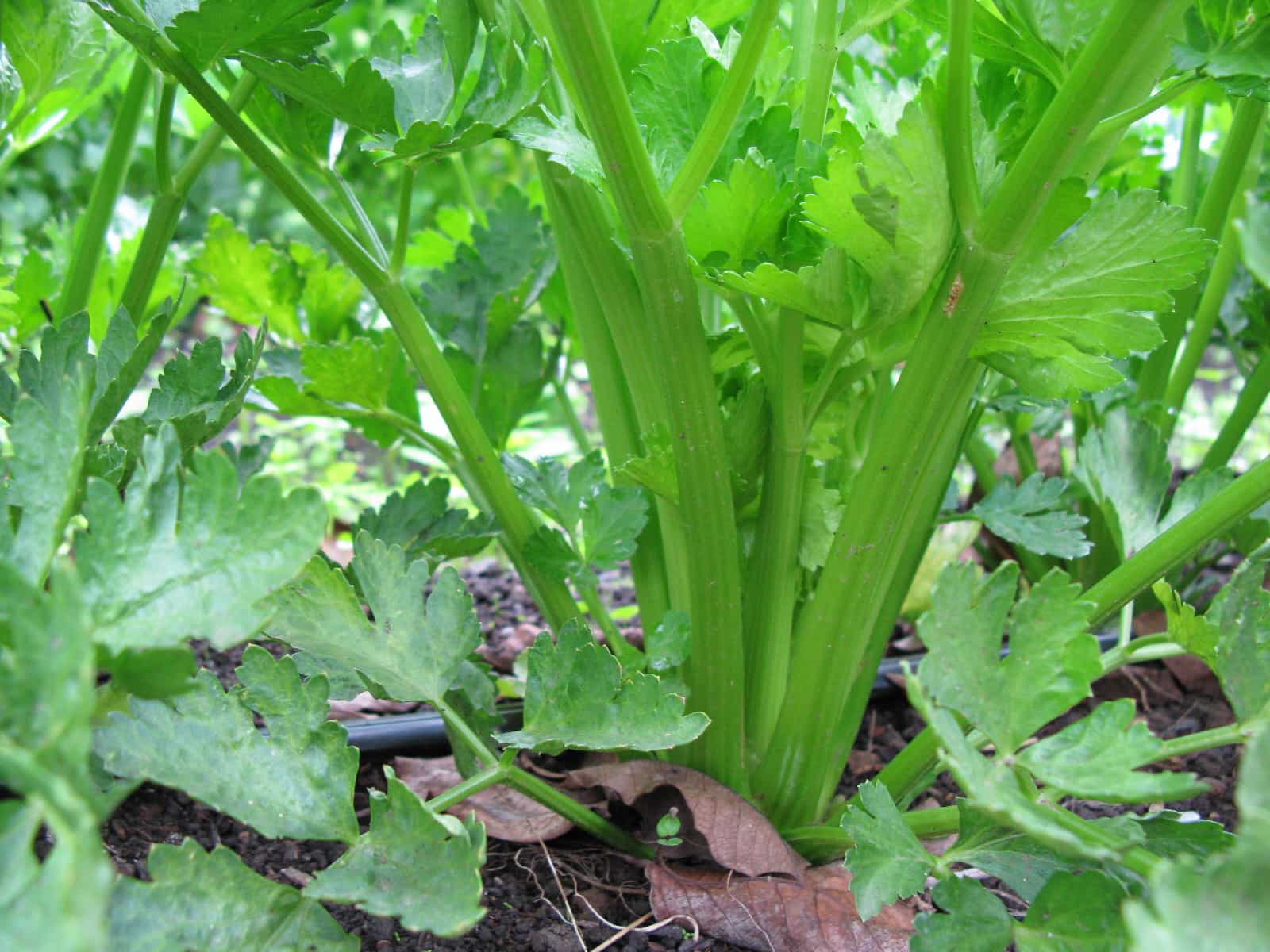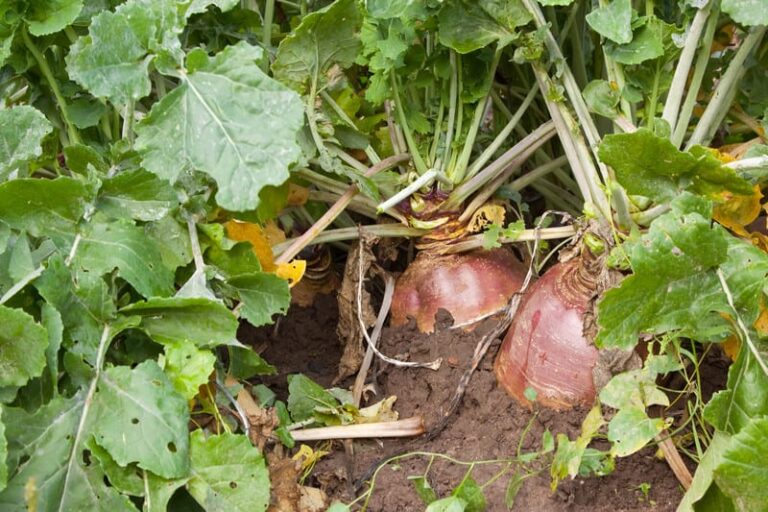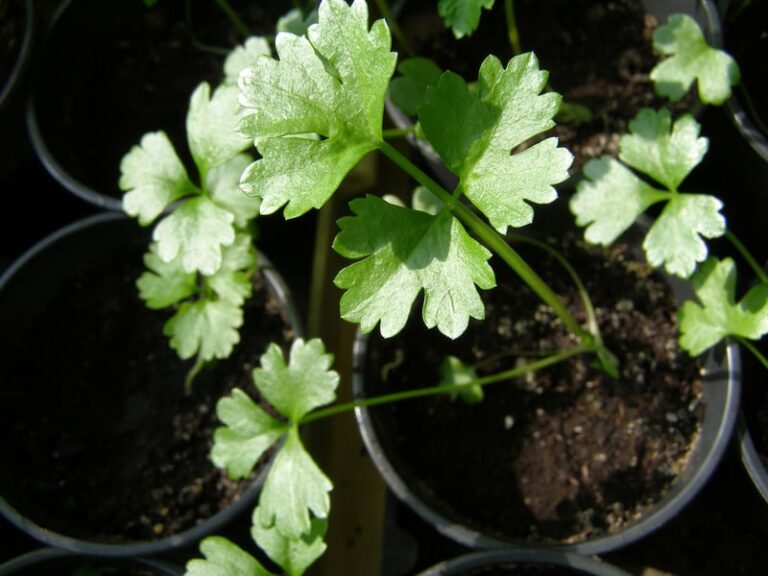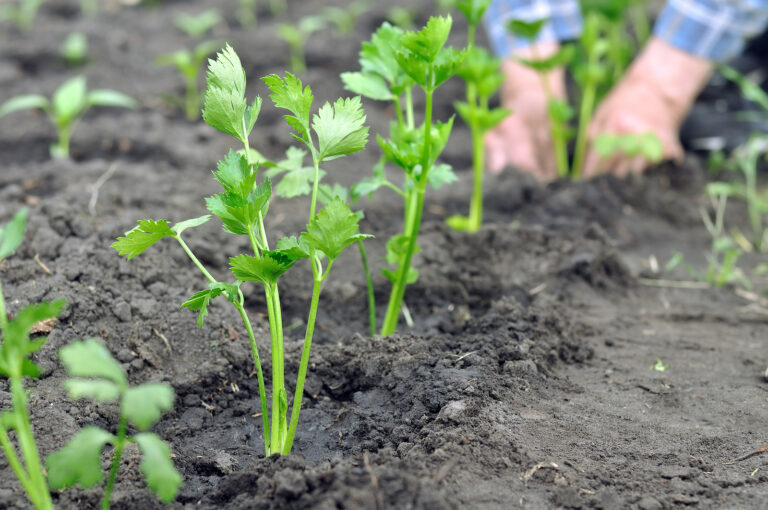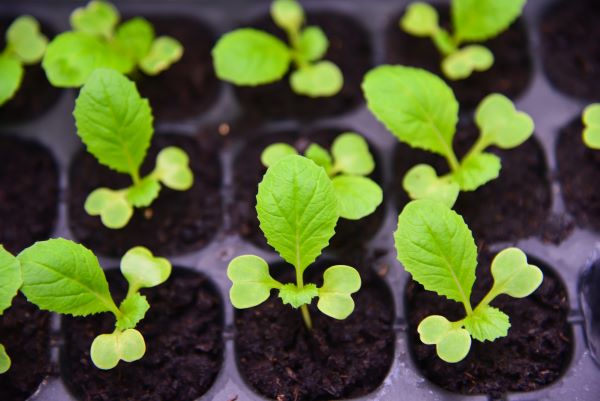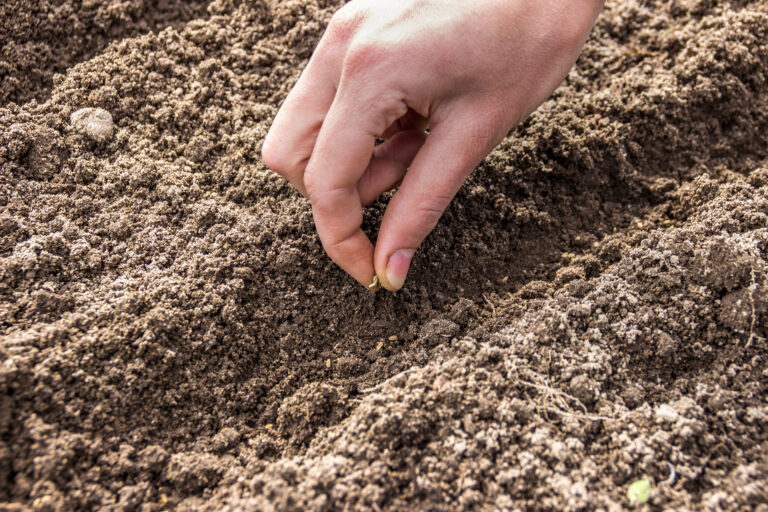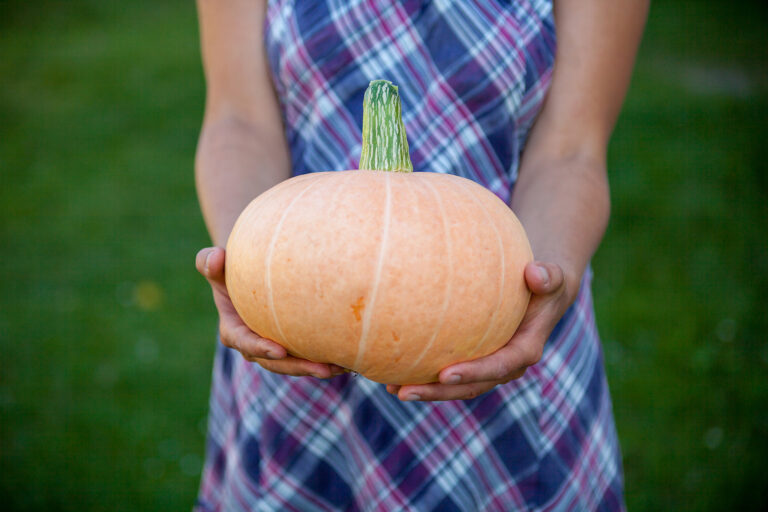How to Harvest and Store Celery
Celery is ready to harvest 85 to 120 days after transplanting depending on the variety.
Celery is finicky and can be a challenge to grow. The optimal temperatures for growing celery are 65° to 75°F (18°-24°C) during the day and 60° to 65°F (15°-18°C) at night.
Related articles:
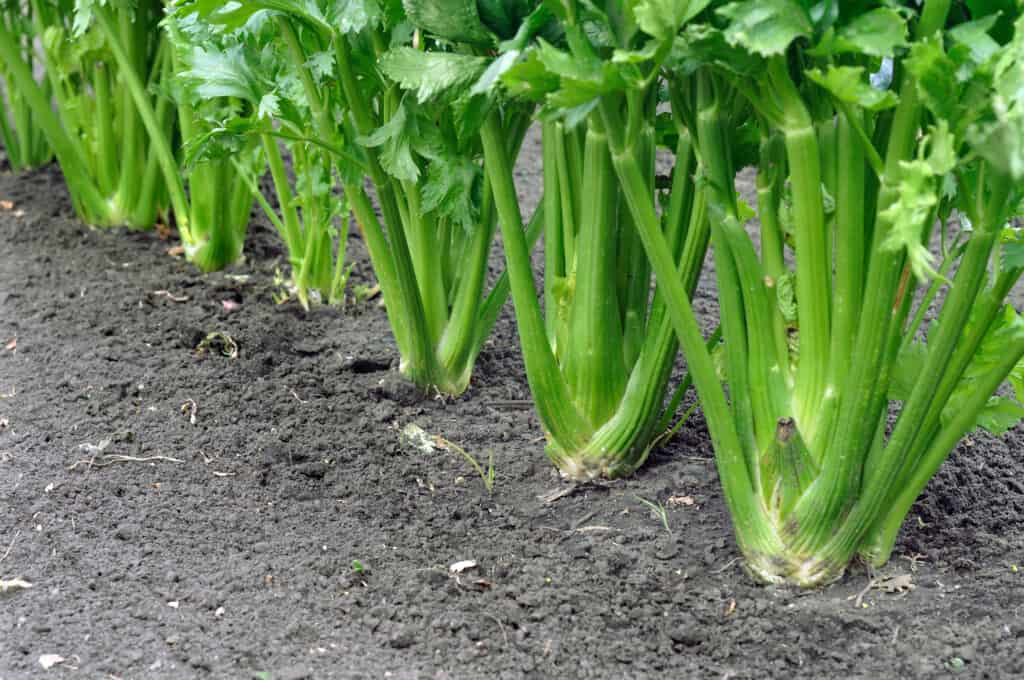
Temperatures must stay above 55°F during the daytime and 40°F at night, otherwise, plants will bolt and set seed. Celery harvested in hot, dry weather—even in the 80°sF–will be tough, stringy, and bitter.
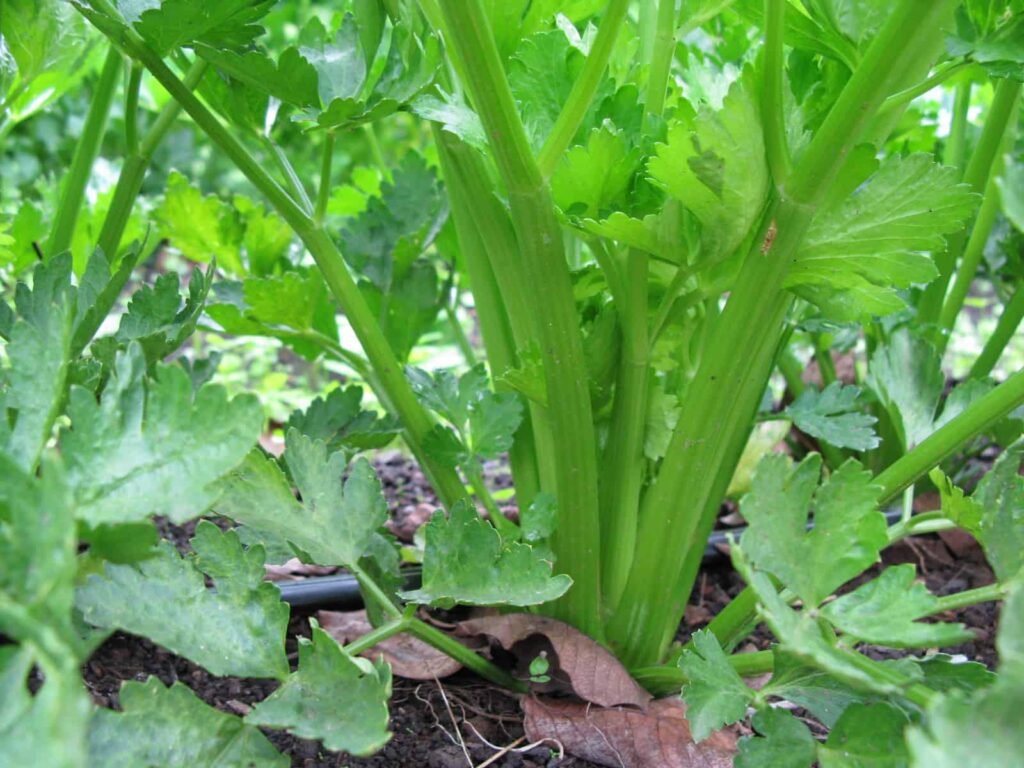
When to harvest celery
- Harvest celery as soon as the stalks are big enough to use—about 6 inches (15 cm) or longer from the soil line to the first leaf.
- Cut off individual stalks or slice off the whole plant at or just below the soil line. The inner stalks are the most tender and taste the best uncooked; dark green stalks contain the most nutrients.
- Whole plants are ready for harvest when they are 3 inches (7 cm) or more in diameter. Harvest whole plants that are compact and tight without open spaces at the center of the stalk.
- Celery can be harvested through the winter in mild-winter regions. In cold-winter regions, celery should be harvested before a freeze and protected from frost. Protect celery from frosts by mounding up soil around the plant.
How to harvest celery
- If you don’t need the whole plant, cut stalks as needed. If you cut just the stalks you need, the plant will keep producing new stalks. Harvest individual stalks from the outside in.
- Cut individual stalks or the whole plant with a serrated knife.
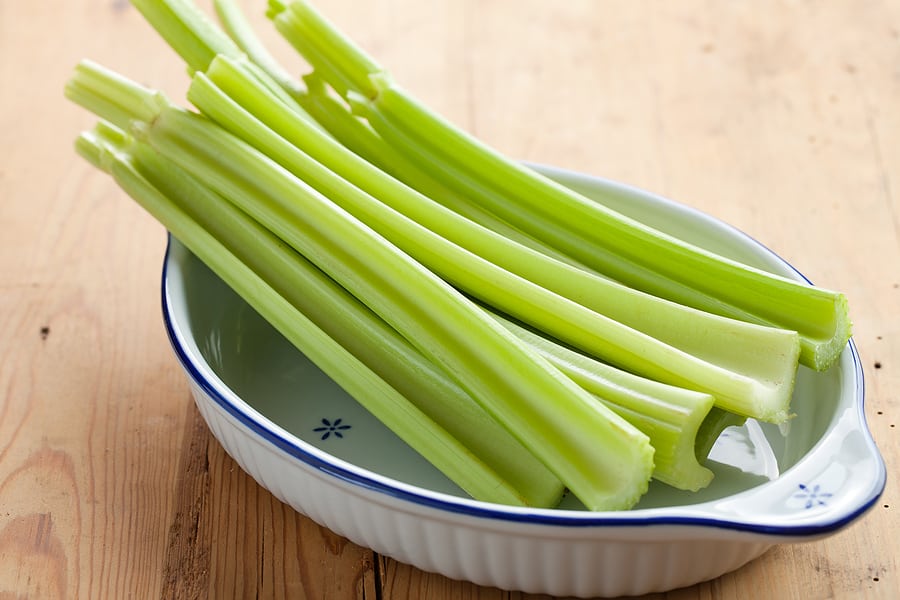
How to store celery
- Store celery cold and moist, 32°-40°F (0°-4°C)—as cold as possible without freezing–and 95 percent relative humidity. Cold and moist storage is a challenge. A refrigerator is cold but the air is dry.
- Wrap celery in a moist cloth or paper towel and place it in a perforated plastic bag in the vegetable crisper section.
- Celery with the leaves attached will keep in the refrigerator for a few days, without the leaves up to two weeks.
- If celery is stored too warm or too cold, the quality will deteriorate and stalks will turn yellow and pithy.
Celery Growing Hub
Start here: The Ultimate Celery Growing Guide: From Seed to Harvest
Celery Basics & Types
- Types of Celery Explained: Pascal, Leaf, and Celeriac Compared
- Best Celery Varieties for Home Gardeners
- Celery vs. Celeriac: Growing, Harvesting, and Cooking Differences
- What You Should Know About Celery Pollination
Planting & Site Prep
- When to Plant Celery by USDA Zone
- Celery Seed Starting Tips
- Direct Sowing Celery: Outdoor Seed Starting Guide
- Proper Celery Spacing and Planting Layout for Healthy Growth
- The Best Companion Plants for Celery and What to Avoid
- How to Grow Celery in Containers or Pots
Care & Maintenance
- How to Water Celery for Crisp, Tender Stalks
- Fertilizing Celery: Feeding Tips for Bigger, Tastier Stalks
- Celery Blanching Techniques: How to Get Tender, Mild Stalks
- Celery Care Throughout the Growing Season
Pests & Diseases
- Common Celery Pests and Diseases How to Control Them Naturally
- Celery Growing Problems: Troubleshooting
Harvest & Beyond
- How to Harvest Celery for the Best Flavor and Yield
- How to Harvest and Store Celery
- Tasty Ways to Cook and Serve Celery
Celery articles at Harvest to Table:
How to Harvest and Store Celery
Tasty Ways to Cook and Serve Celery
Celery Growing Problems Troubleshooting
Garden Planning Books at Amazon:
- Vegetable Garden Almanac & Planner
- Kitchen Garden Grower’s Guide Vegetable Encyclopedia
- Tomato Grower’s Answer Book
More harvest tips:
Learn when and how to harvest your favorite vegetables for the best flavor and texture. Get storage tips for each crop. Click on the vegetable you are growing below.
- Artichoke
- Arugula
- Asparagus
- Beans
- Beets
- Broccoli
- Brussels Sprouts
- Cabbage
- Cantaloupe — Melons
- Carrots
- Cauliflower
- Celery
- Chard
- Collards
- Corn, Sweet
- Cucumbers
- Eggplant
- Endive and Escarole
- Garlic
- Jerusalem Artichoke
- Kale
- Kohlrabi
- Leeks
- Lettuce
- Melons
- Okra
- Onions
- Parsnips
- Peas
- Peppers
- Potatoes
- Pumpkins
- Radicchio
- Rhubarb
- Rutabaga
- Spinach
- Squash, Summer
- Squash, Winter
- Sunchokes
- Sweet Potato
- Swiss Chard
- Tomatillo
- Tomatoes
- Turnips
- Watermelon

